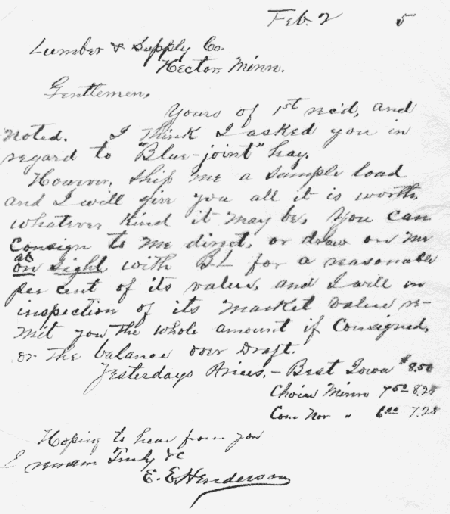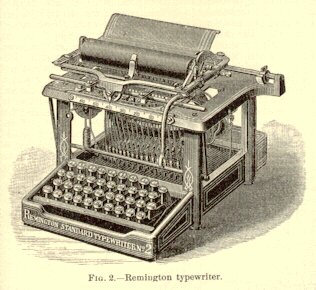Typewriters
Today, the typewriter teaches us its purpose. The University of Houston's College of Engineering presents this series about the machines that make our civilization run, and the people whose ingenuity created them.
I have the oddest old artifact on my study shelf. It's my great-grandfather's letter book. It's a bound volume, and all that's left in it are tissue paper pages. He wrote letters with a dipped ink pen on regular paper that'd once lain between the tissues. Before he tore the letters out and mailed them, he blotted them and left a copy behind on the tissue. The fuzzy imprint of one brief telegraphic letter, written in 1891, says:
Gentlemen, Please quote me the expense of shipping car load of saw dust from your station.
Why did he use such a crude method? Well, consider the alternatives. Carbon paper was an invention that'd been around for twenty-two years back then, but you couldn't press a dipped pen hard enough to use it. Maybe you could get enough force with a pencil. But you didn't write letters in pencil.
With a typewriter and carbon paper, copying would've been a cinch, and the typewriter had also been invented by then. But it hadn't yet found its way to great-grandpa.
An inventor named Christopher Sholes started to develop a workable typewriter just after the Civil War. He drew in co-inventors, and together they made improvements. In 1872 they found a manufacturer -- the small-arms maker, Remington. After the War, Remington needed a peacetime product. The first Remington machine came out in 1874. Four years later, it'd developed into something very much like the manual typewriter you may've once used. So why was great-grandpa still using ink pens and blotter copies in 1891?
Historian Cynthia Monaco tells us that only five thousand typewriters had been sold by 1880. People loved to watch typewriter demonstrations in stores. It was an exciting novelty, but people saw no use for it in their daily lives. The Victorian rite of letter-writing followed rules and conventions. Good handwritten letters were the mark of a lady or a gentleman. A typed letter reminded people of printed flyers. One backwoodsman, offended when he got his first typewritten letter, wrote back, "You don't need to print no letters fer me. I kin read writin."
So the Remington Company did badly when it first tried to sell its machines to domestic buyers. Typewriters finally broke into the market when the business world saw their value. Ten times as many typewriters were sold in the six years after 1880 than in the six years before. By the time great-grandpa wrote his letter to the lumber company, the times were just catching up with him. By then, most small businesses had at least one typewriter.
Like all new technologies, the typewriter had to teach us what its real role in our lives would be. And that happens only after an invention goes to market. We still like to receive handwritten notes from friends. But just try to imagine a modern business office still using hand-written letters and blotter copybooks.
I'm John Lienhard, at the University of Houston, where we're interested in the way inventive minds work.
(Theme music)
Monaco, C., The Difficult Birth of the Typewriter. American Heritage of Invention and Technology, Spring/Summer 1988, pp. 10-21.
This is a greatly rewritten version of Episode 100.

A leaf from great-grandpa's copy book, 1891

An early Remington typewriter
From Appleton's Cyclopaedia of Applied Mechanics, 1892